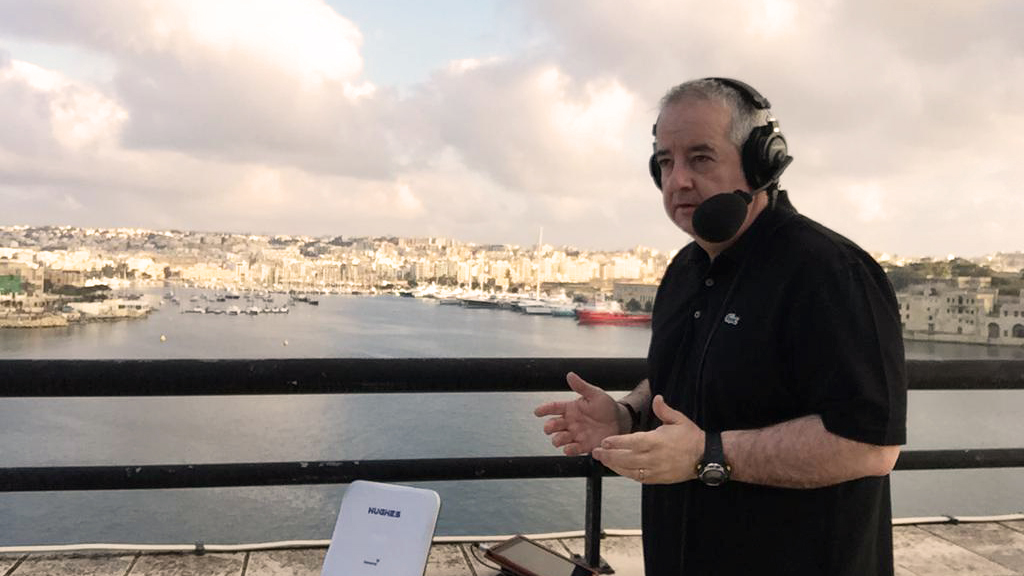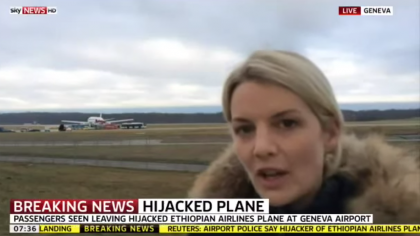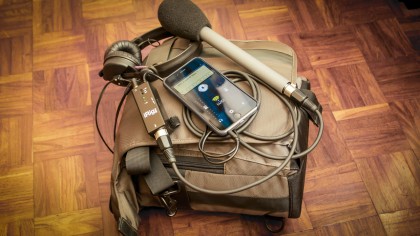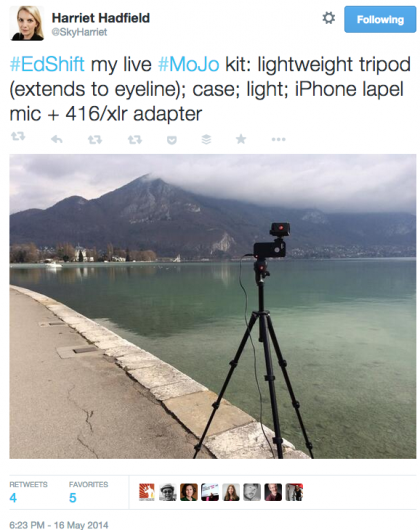How the smartphone changed the general election
Has my mobile got election news for you?

The 2015 UK general election saw something special - the first time the smartphone played a leading part in helping millions of people get a close and real-time view of the unfolding events.
But is this just a gimmick by broadcasters struggling to maintain their relevance alongside online user-generated content, keen to be seen hanging with the latest cool-kid social media gadgets? Or is mobile genuinely going to play a pivotal role in the newsroom of the future?
TechRadar has spoken to broadcasters and media outlets leading the mobile charge to learn how smartphones and tablets helped revolutionise coverage of the 2015 UK general election.
Mo-Jos
Reporter Nick Garnett is at the coalface of the BBC's election coverage. As Radio 5 Live's North of England correspondent being mobile is central to his job, and when covering the election his actual mobile is central to it too.
He describes how a typical shift revolves around his iPhone: "On an average day I'll turn up with my smartphone to interview somebody, recording the audio and filming them at the same time. I'll then edit the audio package on my phone sitting in my car, and send that from there directly to the BBC's playout systems.
"Then I'll edit the video [on my phone] and send that up to our interactive team. Then it's time for the live broadcast," which, 80-90% of the time, Garnett also conducts using his smartphone.
Garnett, like many at the BBC, sees so-called 'mobile journalism' as transformative for the industry, not just for the election: "Mobile is the biggest development in broadcast journalism in the last 20 years. There's nothing bigger than this, it's just gigantic."
Get daily insight, inspiration and deals in your inbox
Sign up for breaking news, reviews, opinion, top tech deals, and more.
Live in 90 seconds
Sky News reporter Harriet Hadfield is another early adopter of smartphone broadcasting. 'Live on Sky News in 90 seconds anywhere with Wi-Fi, 4G or 3G' is her claim, backed up by a showreel full of smartphone-filmed on-location reports.
"Broadcasting via smartphone is brilliant for Sky News when we don't have traditional broadcast equipment available," she says.
Often it can be about capturing 'that' moment live or offering a live shot of a breaking story until the crew arrives. In the past, we would have lived without the pictures, but for a rolling news service, having access to more live footage offers a definite advantage.

She hints that convincing others to take smartphone reporting seriously hasn't always been straightforward. "It's been really interesting in terms of acceptance. Mostly people take a while to warm to the idea - until something happens and it puts us miles ahead of the opposition."
Hadfield is careful not to overstate the current role of mobile in the newsroom though: "It's a great addition to our newsgathering, but will never be as good as having a team of Sky News colleagues working together in the field, producing quality pictures and journalism."
Broadcasting on the cheap?
For Garnett the portability benefits a 2015 smartphone offers are clear:
"I used to carry three or four flight cases full of equipment, and now I can carry everything I need in one messenger bag over my shoulder."

Cost is a enormous factor too. With a smartphone and basic grab-bag of accessories and apps costing less than £1,000, mobile journalist kit can begin to displace at least some satellite trucks, radio cars and edit suites costing tens or hundreds of times more.
Ramp this up to general election scale and no longer does comprehensive coverage become a technical and logistical issue of where strategically to deploy reporters, camera crews and comms trucks.
"This is broadcasting on the cheap," he adds, "but it's just as good quality."
Alison Gow heads up digital innovation across Trinity Mirror's regional news titles and believes firmly in the power of mobile. As the UK's largest newspaper group Trinity Mirror publishes 240 regional papers alongside hardy nationals such as the Daily and Sunday Mirror, not to mention corresponding online portals and social media accounts.
It's Alison's job to make sure news gathering remains on the cutting edge, particularly across a fast-paced general election campaign.
"Several years ago a reporter might go on an expensive multimedia broadcast course for a few weeks, and come back to produce very high quality, but very time-consuming video packages that a small proportion of our audience watched," she recalls.
Fast forward to the smartphone-equipped reporter of 2015: "If a reporter shoots 30 seconds of video and takes some photos at an incident, edits them with the myriad excellent free apps, then shares them with the newsroom and social media, it's more effective, hits audience need and is cost-efficient. Plus they don't need to cart around pieces of expensive camera kit."
And Sky's Hadfield agrees that a smartphone alone is perfectly capable of live network news broadcasts when required.
"The point for me is not to have too much stuff as that makes it difficult to carry everywhere with me," she explains, running through her 'live in 90 seconds' mobile kit bag.
"I have a light-weight Manfrotto tripod that - crucially - goes high enough to reach a person's eye-line. Then a case that attaches to the tripod plate, with a small light attachment. I use a traditional 416 microphone with a special adapter that makes it plug into the iPhone.
"I have a spare phone for internet/email access while broadcasting and sometimes to get IFB [interruptible foldback, an in-ear audio feed from the studio].

"Oh, and a shower cap in case it rains."